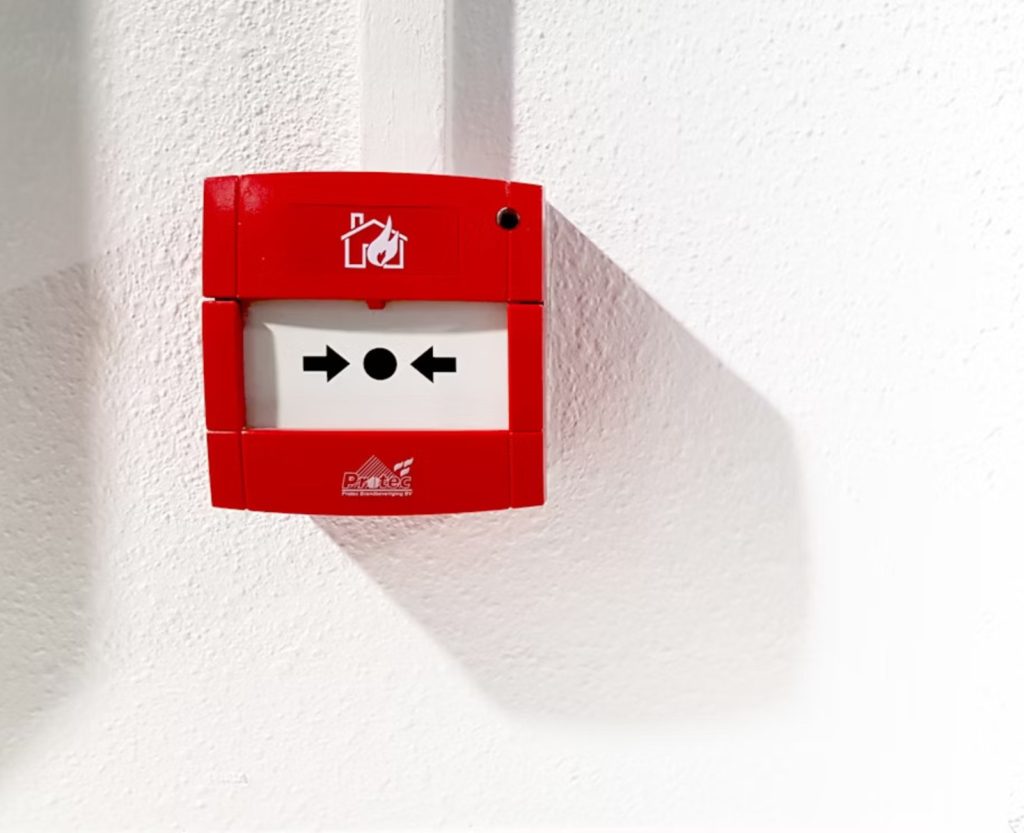The present reality of asset tokenization
Asset tokenization is no longer the story of the future, but it’s a present-day reality brimming with exciting opportunities for those who could grab.
As the numbers never lie, the market of asset tokenization has experienced an extraordinary surge, which is expected to reach at least USD 10 trillion by 2030.

This somehow reflects the way people accept the new way of buying and selling assets, and recognize how asset tokenization could change the game of finance in the future to come.
3 Key reasons why tokenization is the future
To answer why we are thinking that tokenization is the future, here is the 3 key reasons:
Lowering financial investments barriers
The very first main reason is the opportunities to break down expensive assets into smaller, and affordable units, reducing the financial barriers to entry for individual investors. Previously inaccessbile assets, such as real estate, art, and venture capital funds, primarily reserved for the wealthy or institutional investors, are now within reach of a broader audience.
For example, with just $100 or such, an individua could acquire a share of a million-dollar property in a prime location and benefit from its appreciating value.
- Global accessibility: Operating on blockchain platforms, tokenization transcends geographical constraints, enabling individuals worldwide to invest in assets across borders seamlessly.
- Enhanced liquidity: Tokenized assets offer improved liquidity compared to traditional investments due to their divisibility into smaller, more manageable shares. This feature allows a wider range of investors to buy and sell portions of the asset, facilitating quicker and more frequent transactions. This liquidity makes tokenized assets more appealing to individuals seeking to convert their investments into cash promptly.
- Diversification opportunities: Asset tokenization unlocks a $400 billion opportunity to access alternative investments, according to Bain & Company. Investors can diversify their portfolios by acquiring tokens in various asset classes, including venture capital, real estate, commodities, cryptocurrencies, and collectibles. This diversification spreads risk and potentially enhances returns for investors.
Blockchain efficiency and transparency
- Decentralization: Blockchain operates on a decentralized network, eliminating the reliance on a central authority. This decentralized approach ensures that data is distributed across network nodes, significantly reducing the vulnerability to fraud and manipulation.
- Immutability: Once a transaction is recorded on a blockchain, it becomes immutable – impervious to alteration or deletion. This inherent feature guarantees the integrity of transaction records, establishing blockchain as a reliable technology for recording ownership and facilitating transfers of tokenized assets.
- Transparency: Every transaction conducted on a blockchain is transparent and visible to all participants, enabling them to trace the origin of assets and cryptographically verify transaction history. This heightened transparency fosters trust and ensures accountability in transactions.
- Smart contracts: Blockchain facilitates the implementation of smart contracts – self-executing agreements with terms directly encoded into the blockchain. These contracts automate and streamline processes, reducing reliance on intermediaries and consequently lowering transaction costs.
- Reduced intermediaries: Blockchain technology facilitates peer-to-peer transactions without the need for intermediaries such as banks or payment processors. By eliminating unnecessary intermediation, blockchain streamlines processes, resulting in faster and more direct transactions.
Globalizing investments
- Accessibility to diverse assets: Public blockchains offer a global scope, eliminating barriers for investors worldwide. Tokenized transactions conducted on blockchain networks remove the necessity for bank or broker accounts, making investment opportunities accessible to anyone, anywhere. This democratization of access enhances the liquidity of traditionally illiquid assets like real estate and art, broadening opportunities for global investors.
- Reduced transaction costs and complexity: Tokenization simplifies cross-border investing, reducing fees and complexities associated with traditional transactions. Leveraging blockchain technology and the public internet, tokenization slashes costs and streamlines processes. In fact, Nasdaq suggests that tokenization could reduce bond issuance costs by up to 80%. According to Roland Berger, widespread adoption of tokenization could lead to total cost savings of approximately 4.6 billion Euros (equivalent to $4.83 billion USD) by 2030.
- Faster transactions: Tokenization enables faster transaction times, facilitating round-the-clock trading. Smart contracts automate transactions based on predefined criteria, expediting the process from the typical settlement time to nearly instant completion. This acceleration minimizes the risk of defaults and disruptions in trading, enhancing efficiency and reliability.
- Simplified currency exchange and compliance: Tokenization simplifies currency exchanges by pairing assets with cryptocurrencies or stablecoins for seamless and cost-effective conversions. Moreover, it ensures compliance with international regulations such as Anti-Money Laundering (AML) and Know Your Customer (KYC) through transparent and programmable smart contracts, providing peace of mind for investors.
Trends in asset tokenization
Real estate
Real estate is expected to drive so much growth in the era of technology and blockchain empowerement. Once considered an exlcusive and costly market, accessibly only to a select few social classes, real estate is now undergoing a transformation with the integration of tokenization and blockchain technology. This innovation opens the doors for a broader audience, regardless of their financial porfolio or resources, to participate in and benefit from the real estate market.
One of the most straightforward yet impactful examples of how tokenization revolutionizes the real estate industry is the ability to tokenize and fractionally divide a property. This enables individual or smaller investors to own one or multiple portions of the property without the need for substantial initial investment.
In addition, leveraging blockchain’s inherent characteristcis can simplify management of property-related rights, such as inheritance, and faciliate liquidity for real estate transactions. Now more than ever, real estate investors could remain rooted in one location, while investing anywhere in the world. Boundless and borderless investment opportunities are operning new doors for investors from all corners of the globe.
Art and collectibles
Non-Fungible Tokens (NFTs) have witnessed an unprecedented surge in popularity, empowering artists and creators to tokenize their digital art, collectibles, and unique assets. This phenomenon has paved the way for a novel market of digital ownership and provenance, revolutionizing the way we perceive and trade digital assets.
Moreover, tokenization ensures enhanced provenance and authenticity, alleviating concerns surrounding the originality and ownership of digital assets. Traditional financial instruments such as stocks, bonds, and commodities are also undergoing tokenization, offering fractional ownership and broadening access to a wider investor base. Leveraging blockchain technology, the issuance and trading of tokenized securities are becoming more efficient, transparent, and secure, signaling a transformative shift in the realm of financial markets.
Commodities and physical assets
In the realm of commodities, tokenization is reshaping the landscape by offering fractional ownership opportunities to investors. This innovative approach allows individuals to own fractions of physical commodities like precious metals or rare materials, granting exposure to these assets without the necessity of physical possession. Furthermore, tokenization facilitates efficient trading through digital tokens representing commodities. This streamlined process enables faster and more efficient trading, potentially reducing transactional costs and enhancing market accessibility for a broader range of participants.
Intellectual property
The emergence of tokenization is revolutionizing the management and trading of intellectual property rights. This innovative approach extends to various forms of intellectual property, including patents, copyrights, trademarks, and digital content licensing. Tokenization enables creators and innovators to tokenize their intellectual property, paving the way for new revenue streams and enhanced value realization. By digitizing these assets into tokens, individuals can efficiently manage and trade their intellectual property rights, unlocking unprecedented opportunities in the digital marketplace.
What we could be expecting more for the future of tokenization?
Tokenization is opening up new avenues for investment beyond traditional assets like real estate, art, and securities. Asset tokenization platforms are making this process more accessible and efficient by providing businesses and investors with the tools needed to seamlessly tokenize and manage these assets. As a result, investors can now easily access tokenized ownership of intellectual property, commodities, and other assets that were previously difficult to trade.
Here is the sum-up of what we could expect for the future of tokenization:
- Expanding investment opportunities: Tokenization is opening up new avenues for investment beyond traditional assets like real estate, art, and securities. Now, investors can easily access tokenized ownership of intellectual property, commodities, and other assets that were previously difficult to trade.
- Global accessibility: With blockchain technology advancing, tokenized assets are becoming more accessible worldwide. This means investors from any corner of the globe can tap into a wider range of investment opportunities, leveling the playing field and democratizing finance.
- Clearer regulations: Expect clearer regulatory frameworks to emerge around tokenized assets. As governments and regulatory bodies provide more defined guidelines, institutional investors will gain confidence, leading to increased participation in this evolving market.
- Enhanced interoperability: Standardized protocols across different blockchain networks will streamline the exchange and interaction of tokenized assets. This interoperability will create a more seamless ecosystem, facilitating smoother transactions and fostering greater connectivity within the market.
This series of blog posts on “asset tokenization” might provide you with informative and valuable guides, tips and answers to your lingering questions.
And if you’re keen on leveraging tokenization effectively, why not schedule a quick chat with us? We’re eager to discuss potential collaborations and explore what we can achieve together!
How useful was this post?
Click on a star to rate it!
Average rating / 5. Vote count:
No votes so far! Be the first to rate this post.




